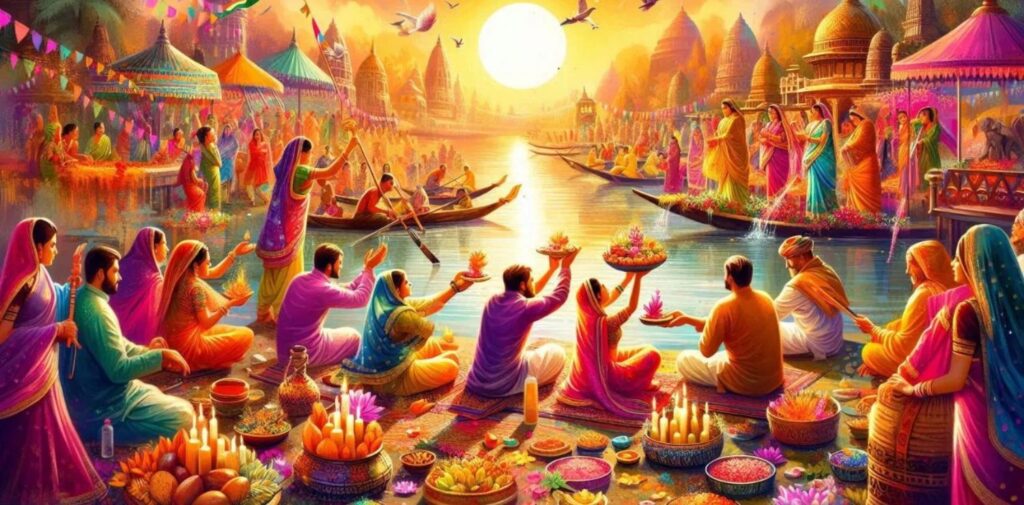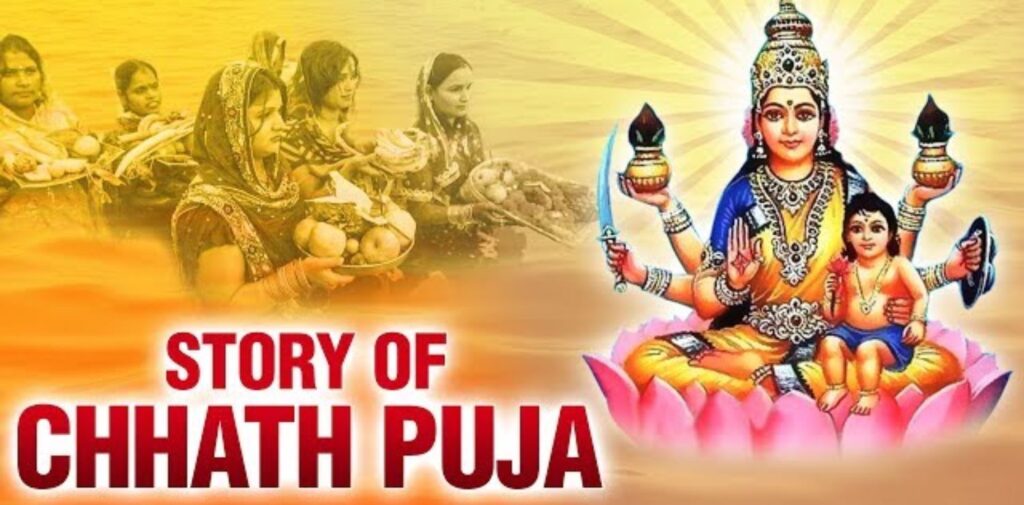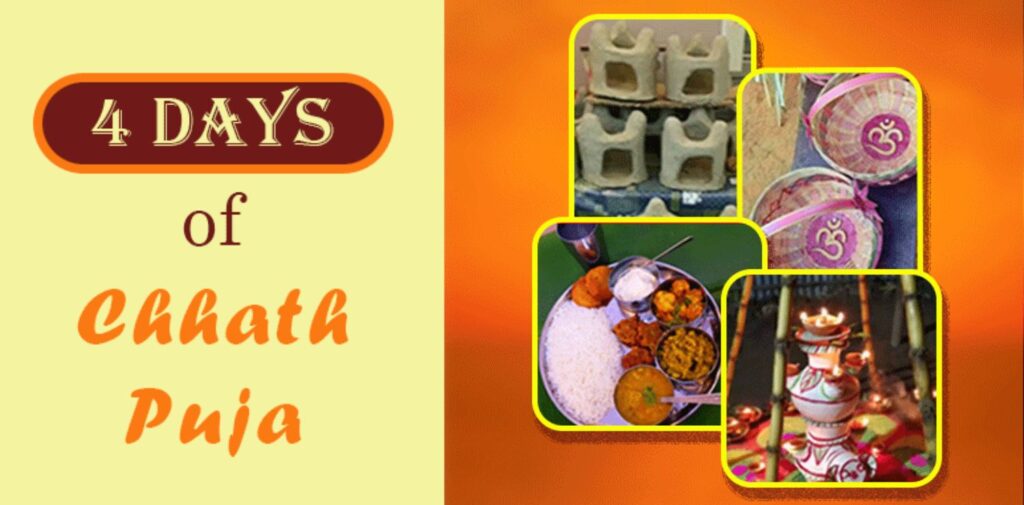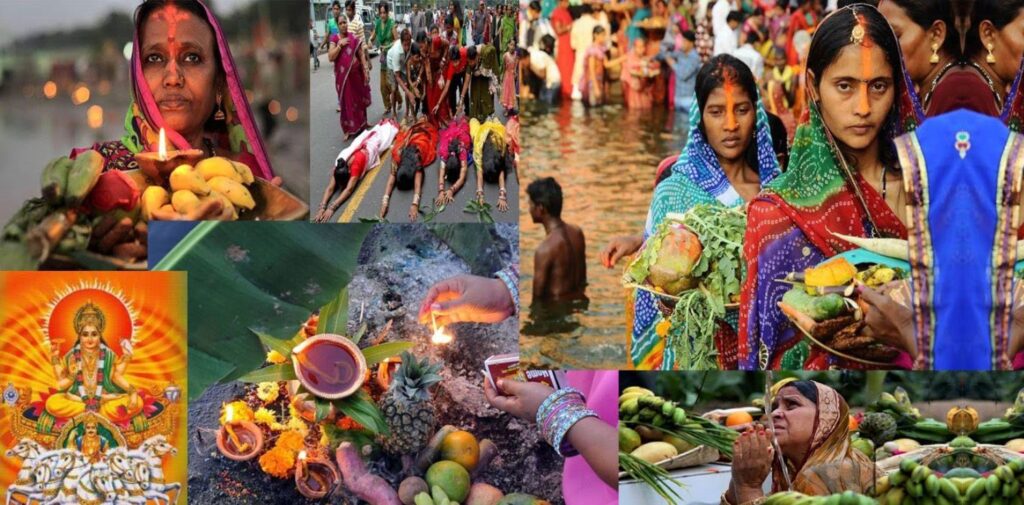Chhath Puja is one of the most significant and vibrant festivals celebrated in India, especially in the states of Bihar, Jharkhand, Uttar Pradesh, and among the Indian diaspora worldwide. This ancient festival is dedicated to the Sun God, Surya, and his wife, Usha, and it is a time for devotees to express gratitude for the blessings of life, health, and prosperity. In this article, we will explore the reasons why Chhath Puja is celebrated, its history, and the detailed rituals observed over its four days.
Why is Chhath Puja Celebrated?
Chhath Puja is a festival that signifies the importance of nature and the Sun in our lives. The Sun is considered a source of energy and life, and by worshipping him, devotees seek health, happiness, and prosperity for themselves and their families. The festival emphasizes the themes of purity, devotion, and community bonding.
The celebration is particularly important for women, who often undertake rigorous rituals to pray for the well-being of their families. The festival is also seen as a way to give thanks for the bounties of the earth, including crops, and to pray for future abundance.

A Brief History of Chhath Puja
Chhath Puja has its roots in ancient Vedic traditions and is believed to be more than 3,000 years old. Historical references to the worship of the Sun can be found in ancient texts and scriptures, including the Vedas and the Mahabharata. The festival is associated with various legends, one of which narrates the story of the Pandavas, who performed Chhath Puja to regain their lost kingdom.
Another popular legend is related to the mythical figure of “Chhathi Maiya,” who is believed to be a manifestation of the divine mother. Devotees believe that she helps them overcome their problems and grants their wishes. Over time, Chhath Puja has become a symbol of cultural identity, especially for the people of Bihar, where it is celebrated with great enthusiasm.

The Four Days of Chhath Puja
Chhath Puja spans four days, each with specific rituals and significance. Let’s delve into each day in detail.
Day 1: Nahay Khay
The first day of Chhath Puja is called Nahay Khay, which translates to “taking a bath and eating.” On this day, devotees begin their preparation for the festival. The day starts with a holy bath in a river or any other clean water source, symbolizing purification.
Rituals of Nahay Khay:
- Purification: Devotees immerse themselves in water to cleanse their bodies and minds.
- Cooking of the First Meal: After the bath, the families prepare a special meal, which usually consists of rice, dal (lentils), and seasonal vegetables. This meal is prepared in clay pots to maintain the sanctity of the rituals.
- Offering to Ancestors: Devotees also prepare offerings for their ancestors, as it is believed that honouring them during this festival brings blessings.
This day marks the beginning of a strict code of conduct. Devotees often refrain from consuming certain foods and beverages, embracing simplicity and purity in their diet.
Day 2: Kharna
The second day of Chhath Puja is known as Kharna. This day is dedicated to fasting and involves rituals that honour the Sun God. Devotees fast from sunrise to sunset, preparing for the main worship of the Sun.
Rituals of Kharna:
- Preparation of Prasad: In the evening, families prepare special offerings known as Prasad. This typically includes kheer (rice pudding made with milk and sugar), puris (deep-fried bread), and fruits.
- Breaking of the Fast: After sunset, devotees break their fast by offering prasad to the Sun and then sharing it with family and friends. This meal is considered sacred.
- Nighttime Prayers: The night is spent in prayers and devotion, thanking the Sun God for his blessings.
Kharna emphasizes devotion and community spirit, as families gather to share the prasad and celebrate together.

Day 3: Chhath
The main day of the festival is celebrated on the third day, known simply as Chhath. This is the day when the main rituals are performed to worship the Sun God and his wife, Usha.
Rituals of Chhath:
- Early Morning Bath: Devotees wake up before dawn and take a holy bath. The water source is often a river, pond, or lake, where they gather with family and friends.
- The offering of Arghya: As the sun rises, devotees prepare to offer arghya, which involves standing in water and raising their hands with offerings of fruits, flowers, and sweets. This is a symbolic gesture of devotion and gratitude.
- Singing and Dancing: The atmosphere is filled with joy, and many devotees sing traditional folk songs and dance around the water body. This adds to the festive spirit.
- Continued Fasting: After the arghya, devotees continue their fast throughout the day without consuming any food or water.
This day is the culmination of the festival, and the joy of devotees is palpable as they express their gratitude to the Sun God.
Day 4: Usha Arghya
The final day of Chhath Puja is called Usha Arghya. This day involves offering the last arghya to the setting sun.
Rituals of Usha Arghya:
- Evening Preparations: Families prepare for the final offerings. The prasad from earlier rituals is included in these offerings.
- Gathering at the Water Body: Devotees gather at the riverbank during sunset to perform the final ritual. The atmosphere is filled with devotion and anticipation.
- Offering to the Setting Sun: As the sun sets, devotees once again offer arghya to the sun, thanking him for the blessings received. This is often done with great fervour and devotion, and it marks the conclusion of the festival.
- Breaking of the Fast: After the rituals are complete, devotees finally break their fast, sharing a festive meal with family and friends.
Usha Arghya symbolizes the end of the rigorous fasting period and the fulfilment of the devotees’ prayers and aspirations.

The Significance of Chhath Puja
Chhath Puja is more than just a religious festival; it is a celebration of life, nature, and gratitude. Here are some significant aspects of the festival:
- Connection with Nature: The festival highlights the importance of nature and the Sun, which are vital for agriculture and sustenance. By worshipping the Sun, devotees acknowledge their dependence on nature.
- Family and Community Bonding: Chhath Puja brings families and communities together. The collective celebrations create a sense of unity and shared devotion.
- Promoting Health and Well-being: The rituals associated with Chhath Puja promote a healthy lifestyle, including fasting, clean eating, and purification practices.
- Cultural Identity: For many, Chhath Puja is an essential part of their cultural identity, reflecting the rich traditions of Bihar and its neighbouring regions.
Conclusion
Chhath Puja is a unique festival that encapsulates the essence of devotion, gratitude, and respect for nature. The rigorous rituals, the gathering of families, and the vibrant celebrations reflect the deep-rooted traditions and values of Indian culture. As the Sun rises and sets during these four days, devotees express their hopes and aspirations, making Chhath Puja a truly enriching experience for everyone involved.
This festival, celebrated with immense enthusiasm, serves as a reminder of the importance of nature, the blessings of life, and the bonds of family and community. Whether you participate in the rituals or simply observe, Chhath Puja offers valuable lessons on gratitude, devotion, and the interconnectedness of all life.




